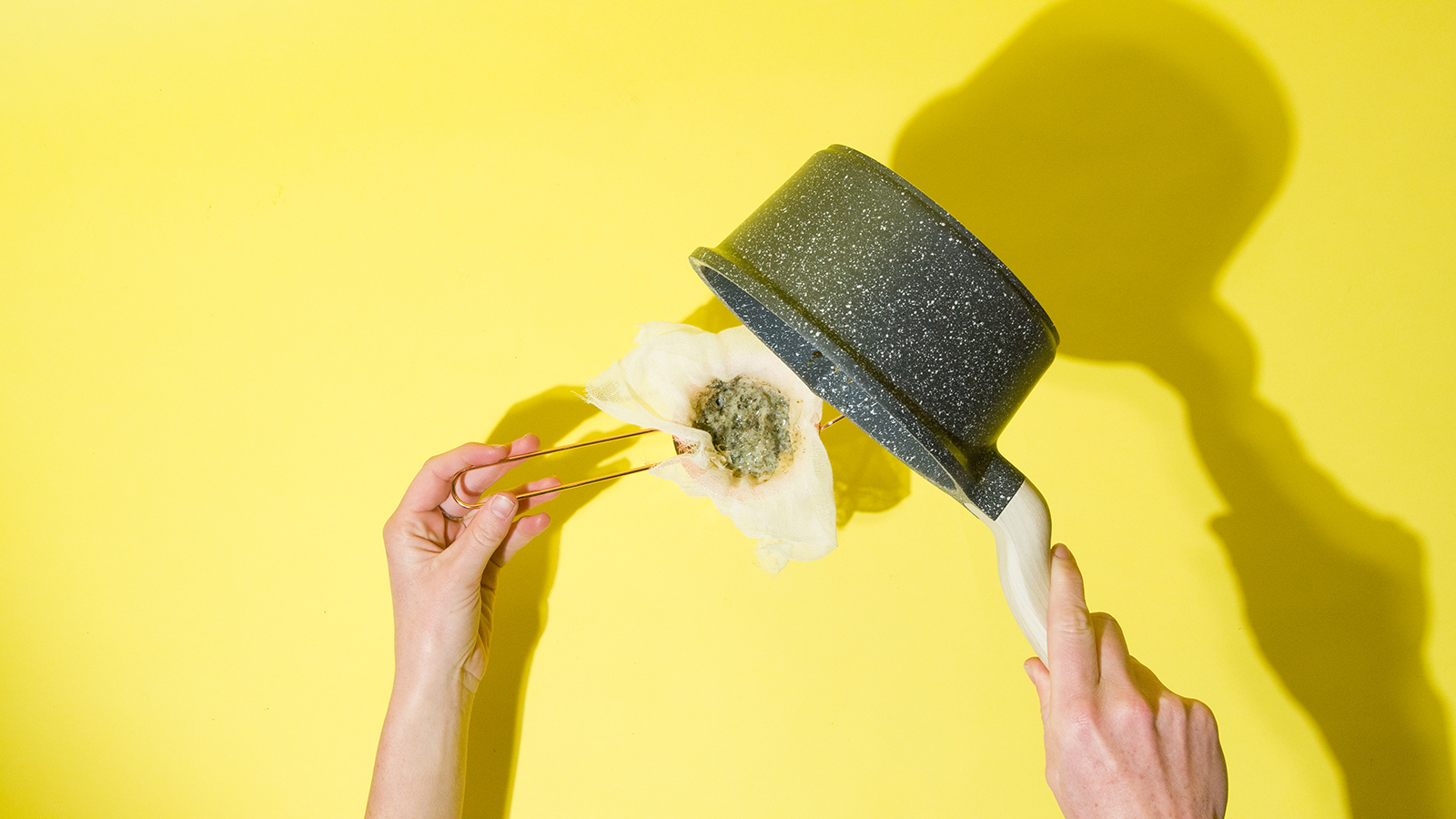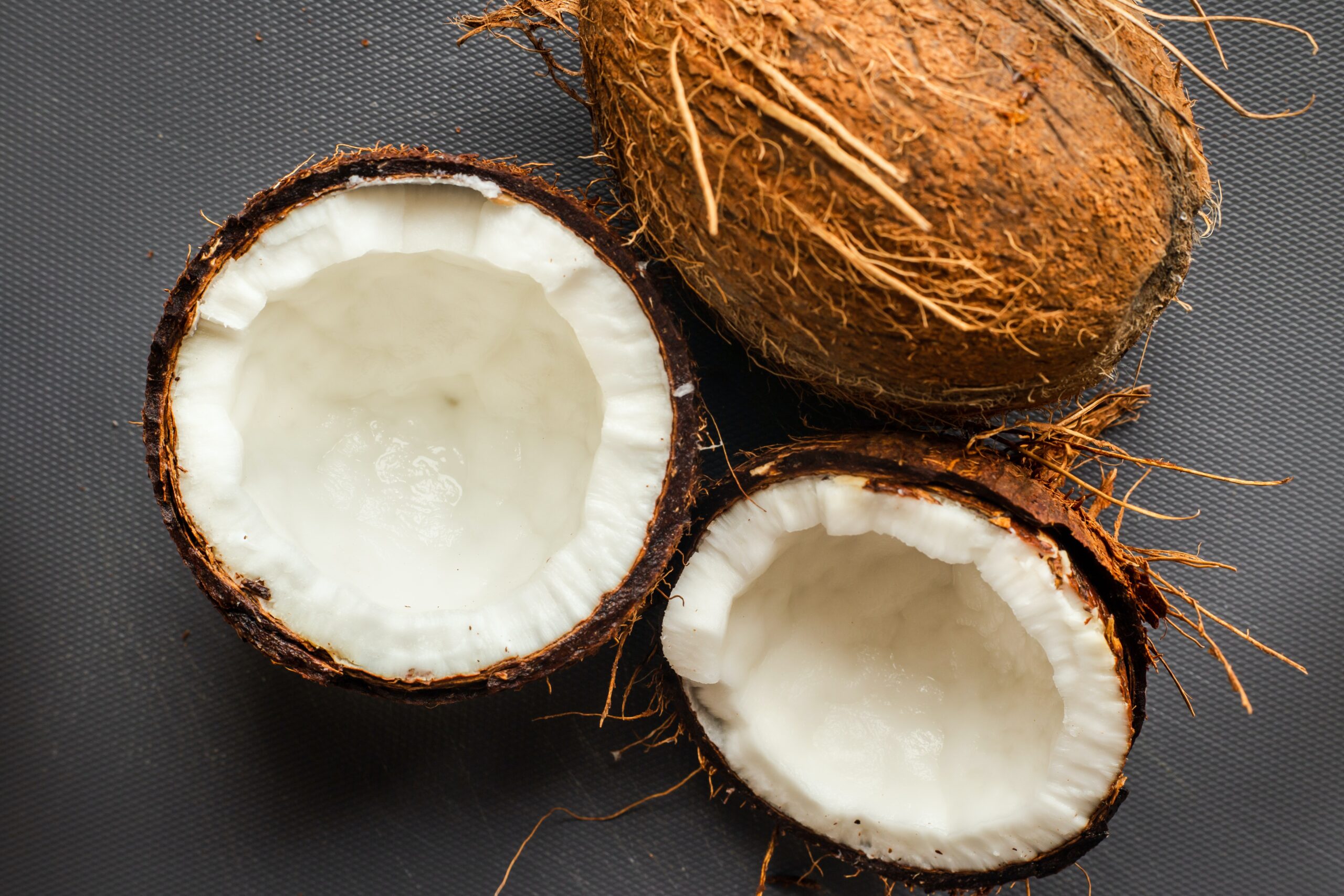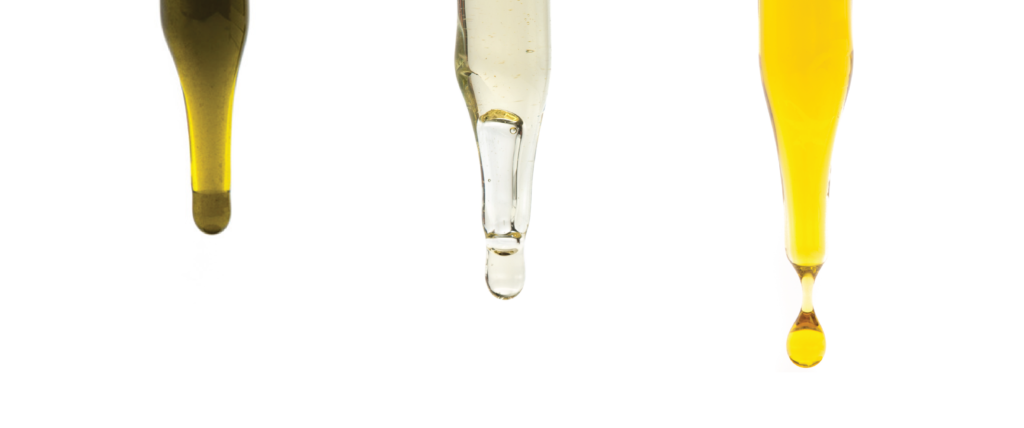Great homemade edibles usually start with one essential ingredient: cannabutter. Whether you want to make medicated Beef Wellington or some classic pot brownies, you'll need to master the same cannabutter recipe.
Learn how to choose the best strains and dose for cannabis-infused butter and open up a world of culinary possibilities.
What is cannabutter?
Cannabutter is short for “cannabis butter,” the intoxicating ingredient in many weed-infused recipes. Traditionally, butter is simmered with cannabis flower to release cannabinoids — primarily THC (tetrahydrocannabinol) and CBD (cannabidiol) — though you can also do the same infusion process with oil.
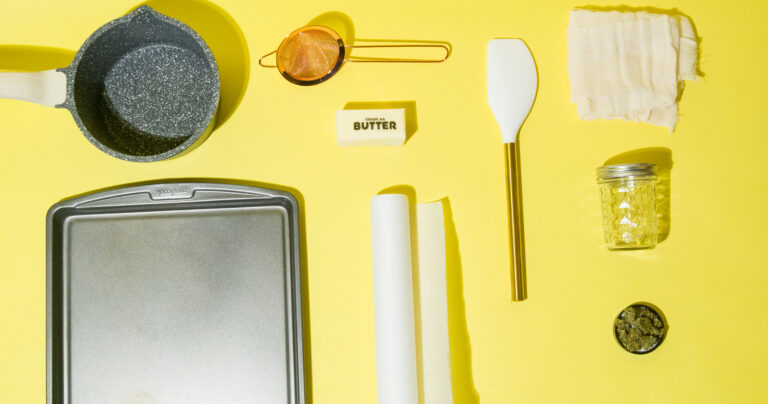 Photo by: Gina Coleman/Weedmaps
Photo by: Gina Coleman/WeedmapsImage lightbox

Cannabutter is a versatile product you can make at home and put into various edible cannabis products, from brownies and cookies to savory dishes like pasta and sauces.
How is cannabutter used to make edibles?
After infusing regular butter or oil with cannabis, cannabutter can be incorporated into any recipe that uses typical non-medicated fats.
You can use cannabutter for:
- Baking: Add cannabutter to cakes, brownies, cookies, and muffins like regular butter.
- Cooking: Cook meats, sauces, and pasta with a small pat of cannabutter for an elevated experience.
- Spreading: Instead of incorporating cannabutter into a recipe, simply spread it on toast for an edible wake n' bake at breakfast.
How to properly dose cannabutter
First, decide what kind of high you want to ensure your cannabutter isn't too strong or weak for your tolerance.
Are you hoping for an intoxicating, head-body high rivaling the potency of the strongest store-bought products? Or are you more interested in a mild, relaxing vibe that'll edge out your nightly glass of wine? If your answer is the former, decarboxylate your weed before baking. If your answer is the latter, skip the decarboxylation step.
Next, learn stoner math. There's a simple yet highly effective formula for approximating the maximum amount of THC in a batch of decarboxylated cannabutter:
(grams of flower) x 1000 x (percentage of THC) = total milligrams
Example: If you infuse your butter with 3.5 grams of flower containing 20% THC, that would leave you with a maximum of 700 milligrams of THC (3.5 x 1000 x 0.2 = 700) for the batch of cannabutter.
However, this isn't an exact science — half of the THC could be lost in the infusion process. This formula aims to give you an idea of the maximum possible potency for each batch of homemade cannabutter.
How to make potent cannabutter
With an eighth of 20% THC weed and this potent cannabutter recipe, you can expect a maximum of 700 milligrams of THC per cup of butter or oil — or roughly 15 milligrams of THC per teaspoon.
This cannabutter recipe is simple, even with the added decarboxylation step. You'll need about three hours, but most of that time won't require active participation.
Materials
- 1 cup (2 sticks) of butter or coconut oil
- 3.5 grams (or more) ground cannabis
- Scale
- Baking sheet
- Parchment paper
- Small saucepan or double boiler
- Metal mesh strainer
- Cheesecloth
- Spatula/other utensils
- Clean Mason jar and lid
Step 1: Prep weed
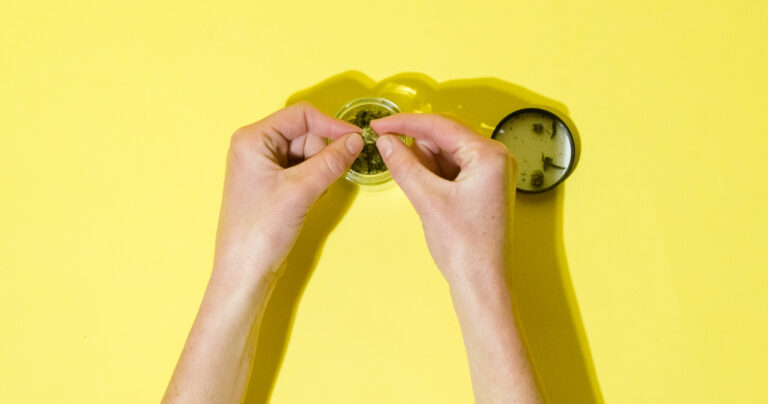 Photo by: Gina Coleman/Weedmaps
Photo by: Gina Coleman/WeedmapsImage lightbox

First, use a hand grinder to break apart the flower. Put parchment paper on a baking sheet and spread the herb evenly across the surface.
Step 2: Decarboxylate
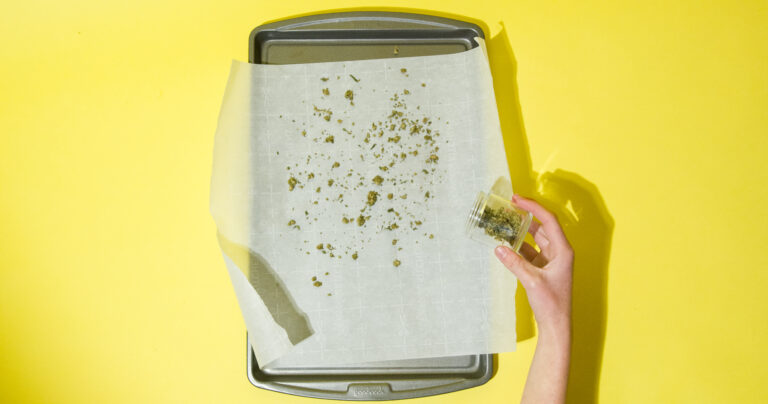 Photo by: Gina Coleman/Weedmaps
Photo by: Gina Coleman/WeedmapsImage lightbox

Preheat the oven to 220°F (105°C), place the sheet in the oven, and bake for 30 minutes.
Step 3: Melt butter
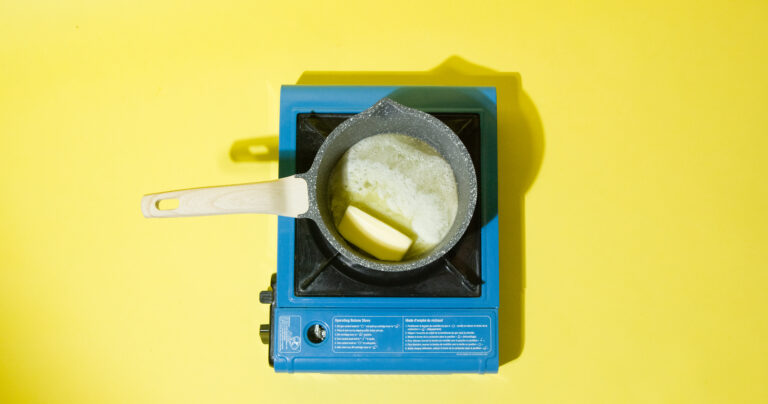 Photo by: Gina Coleman/Weedmaps
Photo by: Gina Coleman/WeedmapsImage lightbox

While the weed is decarboxylating, set up the double boiler or saucepan on your stove and melt the butter.
Step 4: Combine and stir
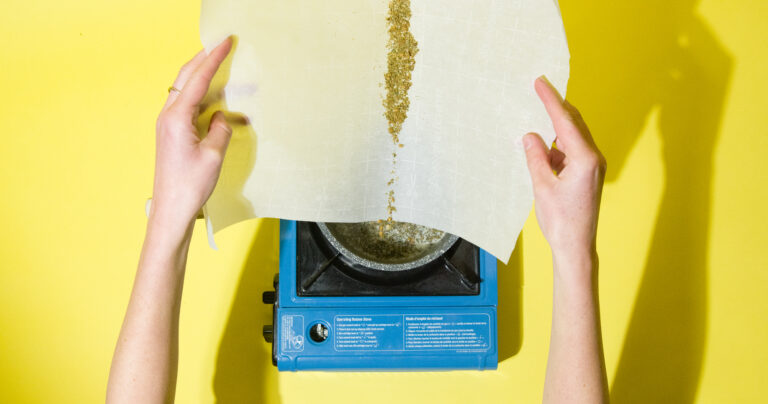 Photo by: Gina Coleman/Weedmaps
Photo by: Gina Coleman/WeedmapsImage lightbox

Once the weed comes out of the oven, lift the parchment by the long edges, and pour the weed into the melted butter — stir well.
Step 5: Simmer
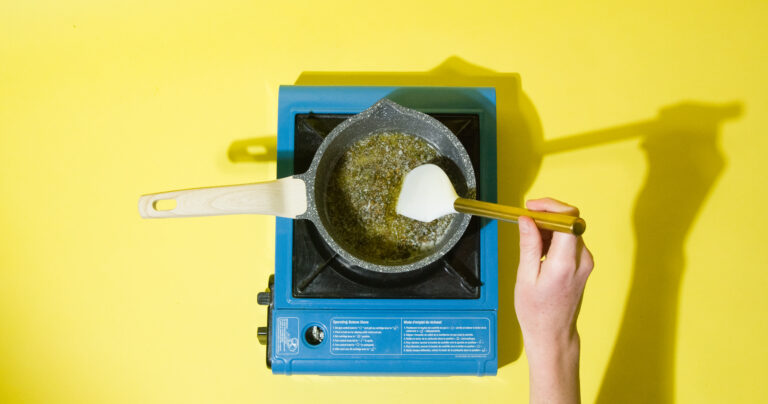 Photo by: Gina Coleman/Weedmaps
Photo by: Gina Coleman/WeedmapsImage lightbox

Keep the butter at a very low simmer for 45 minutes to an hour.
Step 6: Filter butter
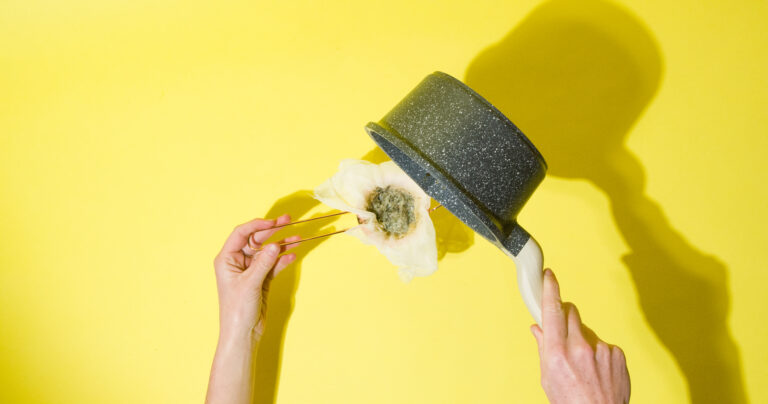 Photo by: Gina Coleman/Weedmaps
Photo by: Gina Coleman/WeedmapsImage lightbox

Remove the butter from the stove. Filter it through a metal mesh strainer lined with cheesecloth into a Mason jar.
Step 7: Gently squeeze cheesecloth
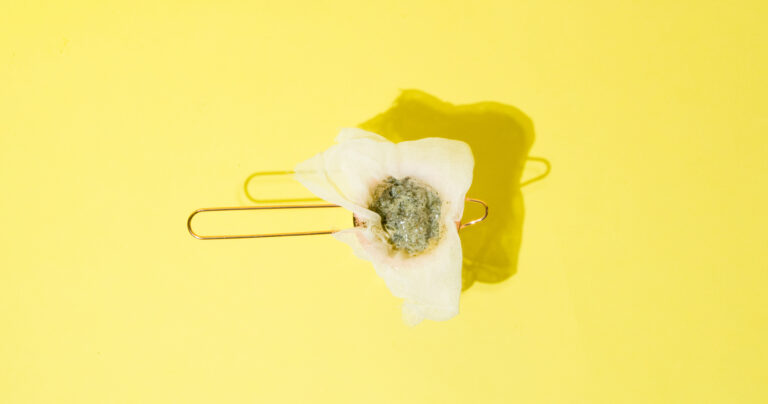 Photo by: Gina Coleman/Weedmaps
Photo by: Gina Coleman/WeedmapsImage lightbox

Gently squeeze the plant matter to get the majority of the butter out. Do not squeeze to excess; you don't want plant matter entering the mix.
Step 8: Enjoy
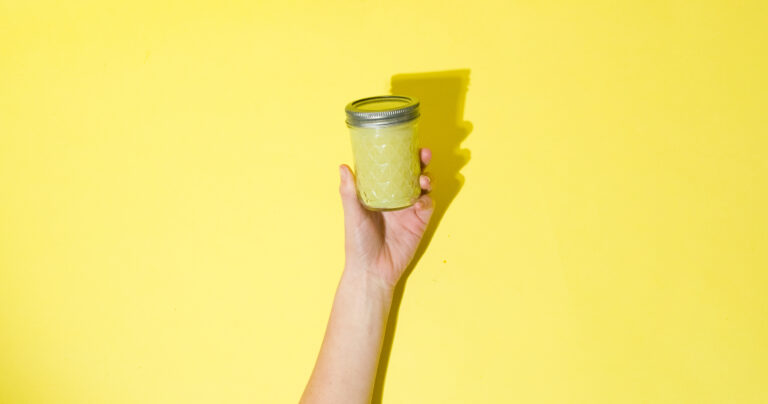 Photo by: Gina Coleman/Weedmaps
Photo by: Gina Coleman/WeedmapsImage lightbox

Your cannabis butter is ready to cook with or eat. It will keep up to two months in the fridge and six months in the freezer.
How to make mild cannabutter
To make cannabutter milder in potency, you can:
- Use lower-potency weed. For example, suppose you use an eighth of 10% THC flower in the cannabutter recipe above. In that case, you can expect a maximum of 350 milligrams THC per cup of butter or roughly 7 milligrams per teaspoon.
- Use hemp flower. Organic hemp flower purchased from a licensed retailer will have 0.3% THC or less. Follow the instructions listed above to make cannabutter with high CBD content and negligible levels of THC.
- Mix in non-medicated butter. You can reduce the potency of cannabutter and extend the reach of your stash by simply using a ratio of cannabutter and regular butter in your recipes — for example, experiment with a 1:1, 1:2, or 1:3 ratio of cannabutter to regular butter.
- Skip the decarbing step. By skipping decarbing, much less THCA will convert into THC — if any. The effects of your recipes will range from non-intoxicating to significantly milder than a cannabis butter recipe that incorporates decarbing.
Other ways to make cannabutter
If you'd rather not use a stovetop, there are other ways to make cannabutter.
Sous vide method
To make sous vide cannabutter:
- Decarb the cannabis and add the flower to a resealable bag.
- Pour melted butter into the bag, ensuring it's cooled enough so it doesn't melt the bag.
- Set your sous vide cooking device to 185°F and carefully add the bag to the water.
- Leave a small opening at the top of the bag so the pressure can force the air out as you lower it into the water.
- Once the water level reaches just below the opening, seal the bag and fully submerge it.
- Allow the bag to soak for four hours.
- When it's done, remove the bag from the water bath.
- Dry the bag so water doesn't drip into the weed butter, then pour the mixture through the cheesecloth and metal strainer into a bowl or jar.
- Use immediately or cover and store for later use.
Slow cooker method
Use a slow cooker for a more hands-off approach.
- Combine your decarboxylated flower with butter in the slow cooker.
- Cook on low heat for several hours (usually 4 - 6 hours), stirring occasionally.
- Strain the mixture.
- Allow it to cool before using.
Common things people make using cannabutter
Explore some of the most popular ways to use cannabutter:
- Pot brownies: For classic pot brownies, follow the recipe on your favorite boxed mix and replace the called-for amount of oil with cannabutter.
- Pot cookies: Pot cookies are extremely simple to make if you have a box mix or a favorite recipe. Simply replace the fat in the recipe with an equal amount of cannabutter.
- Popcorn: Drizzle cannabutter over popcorn for a high-fiber, medicated snack.
- Hot drinks: Add a teaspoon of cannabutter to hot tea or coffee for a soothing and discreet cannabis-infused beverage.
Tips for making the best homemade edibles
Keep these tips in mind before baking or cooking with cannabutter:
- Buy legal, lab-tested products. The most important thing you can do when making homemade cannabutter is to shop from a licensed dispensary. This way, you can get the laboratory certificate of analysis for the flower of your choosing and be confident the percentages of THC, CBD, and other cannabinoids are accurate. If you need help finding this information, ask your budtender.
- Look beyond the THC content. High-tolerance cannabis consumers typically look for the most potent cannabis available because other qualities that define top-shelf — glistening trichomes, colorful hues, perfect bud structure — will be irrelevant once it's in a vat of butter. That said, the flavors of the strain can shine through the butter, so don't buy a piney strain if you're not going for a woodsy flavor or a lemon-scented strain if you're not a fan of citrus.
- Test a small spoonful first. Before cooking with cannabutter, test a small portion first and wait at least an hour to gauge the effects before consuming more. This way, you'll know exactly what you're working with and can modulate the potency of your final baked goods.
Bottom line
Mastering cannabutter can give you greater creativity and control over your edible experiences. That said, every batch of cannabutter will be different in potency, flavor, and aroma. For the best results, sample a teaspoon of each batch of cannabutter before baking or cooking with it.

